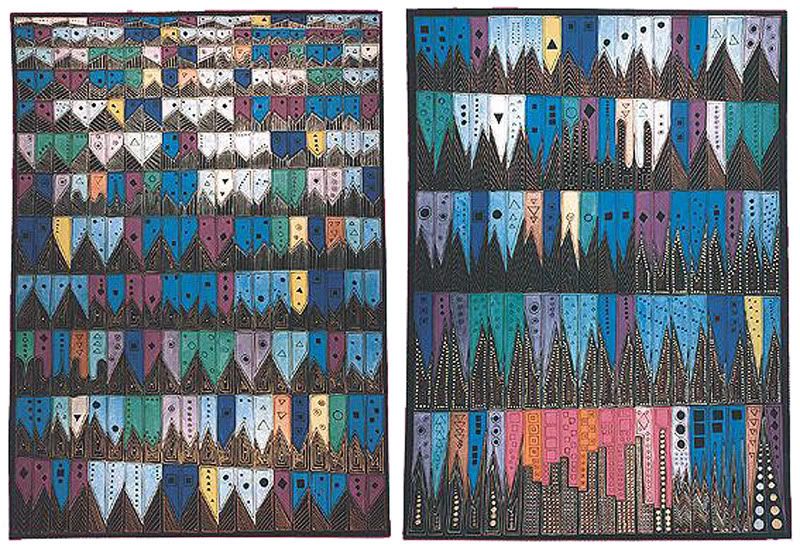
Unravelling Bolero, 1994--a bar-by-bar representation of Ravel's Bolero
Anne Adams was a Canadian biologist-turned-artist who died in 2007. Her best-known piece, the "Bolero" above, I think fits well into our recent discussion of visual representations of graphic rhythms. It seems that her interest in this approach may actually have been awakened by the early stages of the brain disease that ultimately killed her. Here is how her case is described in New Scientist:
When Adams completed Unravelling Boléro in 1994, her brain was starting to be affected by a neurodegenerative condition called primary progressive aphasia. It later robbed Adams of speech, and eventually took her life.
In its early stages, however, the condition seemed to unleash a flowering of neural development in a brain area that integrated information from different senses. In part, Unravelling Boléro may be a beautiful symptom of a terrible disease.
Here is how Unravelling Bolero is described in a piece in The New York Times:
Dr. Adams, who was also drawn to themes of repetition, painted one upright rectangular figure for each bar of “Bolero.” The figures are arranged in an orderly manner like the music, countered by a zigzag winding scheme, Dr. Miller said. The transformation of sound to visual form is clear and structured. Height corresponds to volume, shape to note quality and color to pitch. The colors remain unified until the surprise key change in bar 326 that is marked with a run of orange and pink figures that herald the conclusion.
Here's one more piece by her:

Migraine, 1998
Apparently, according to these articles, Ravel himself suffered of the same disease.
More information, and a gallery of more works, here.